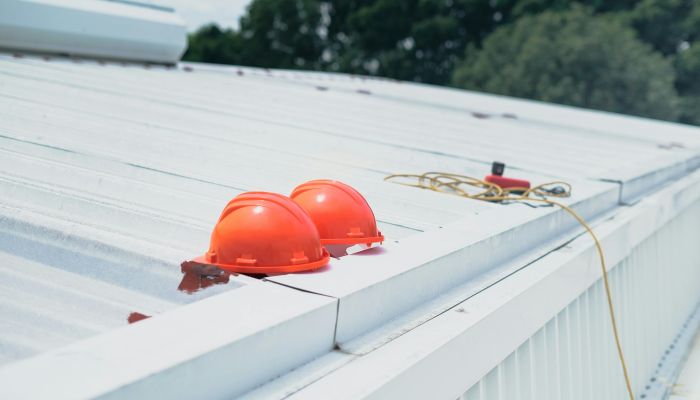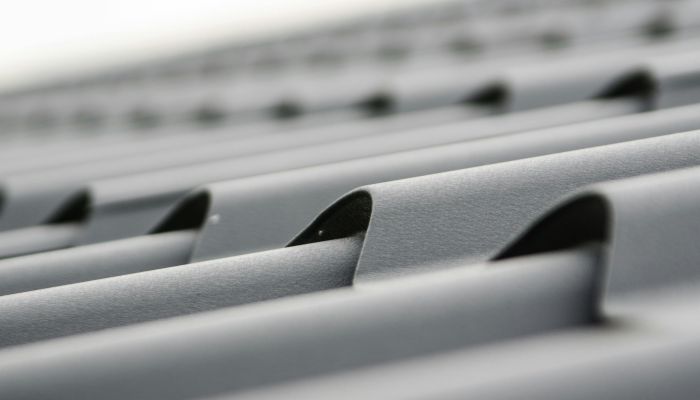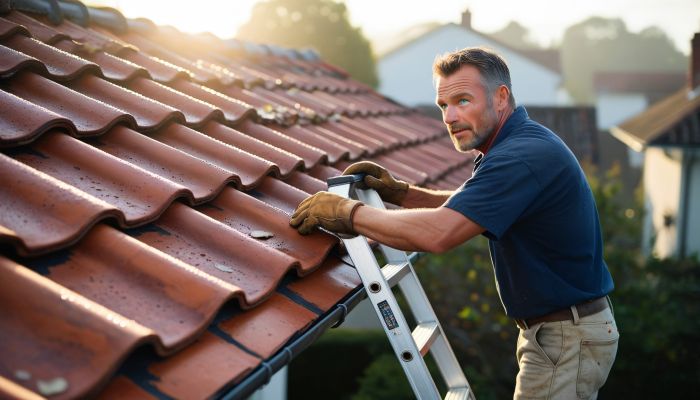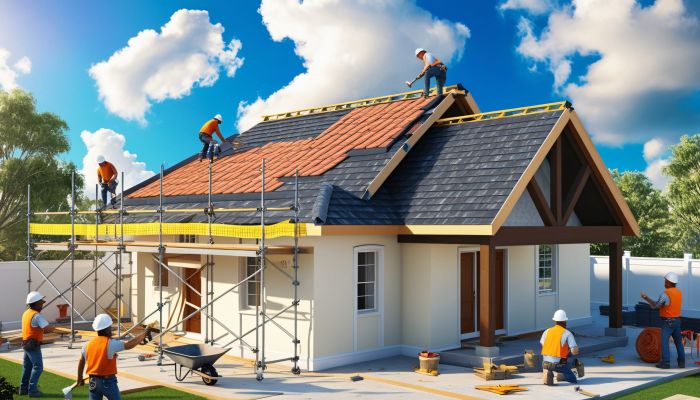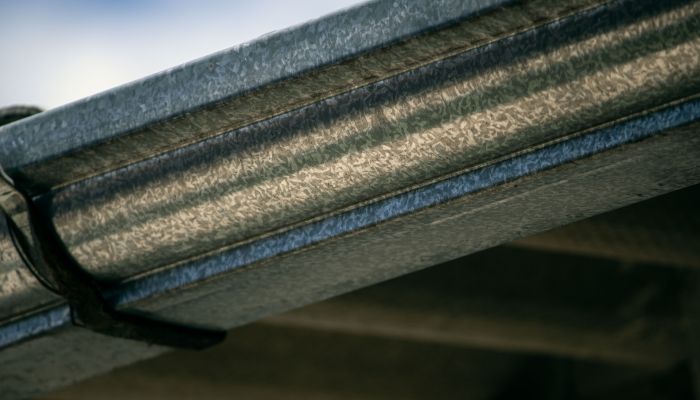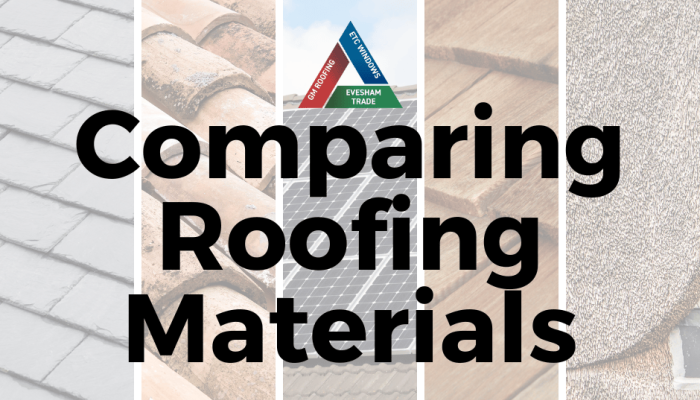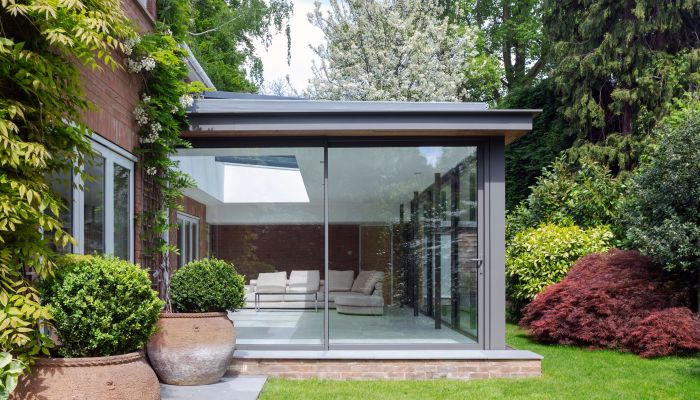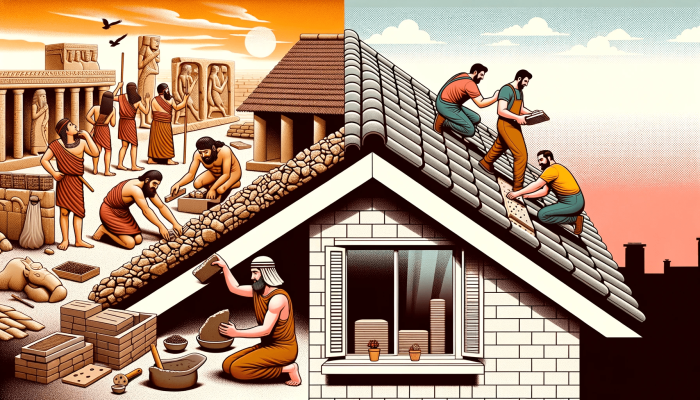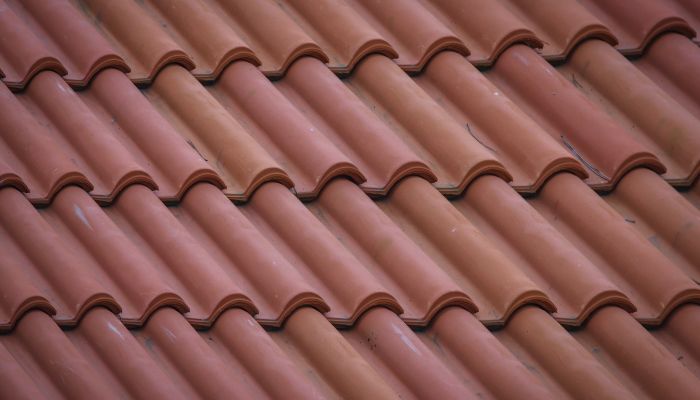Eco-Friendly Roofing Materials: What Are Your Options?
Eco-Friendly Roofing Materials: What Are Your Options?
In this article we will explore the different eco-friendly roofing materials, where sustainability meets style!
We will look into a range of options that are not only great for sheltering your home but also help to contribute to a greener and more sustainable planet. Discover the benefits of these roofing materials and uncover the durability and energy-efficiency of EPDM rubber roofing. This article will take us on a journey to unveil the sustainable secrets behind each roofing material, reassuring you to make the eco-conscious and suitable choice for your home.
Asphalt Roll
Asphalt roll roofing, when it is compared to traditional asphalt shingles, tends to have a lower environmental impact. Asphalt roll is usually made with recycled materials which does make it a more sustainable choice.
Asphalt Roll Eco-Friendly Advantages
- Recyclable: the materials used to make asphalt roll roofing are usually recyclable, reducing the overall environmental footprint impact.
- Energy Efficiency: some types of asphalt roofing come with reflective coatings that help to contribute to your properties energy efficiency by reflecting the sunlight and reducing the heat absorption.
- Affordability: as it is a more cost effective roofing option, asphalt roll is a more accessible option for people looking to become more environmentally conscious.
Asphalt Roll Eco-Friendly Disadvantages
- Durability: while asphalt roll is durable it isn’t the most durable of the roofing options, neither does it have as long of a lifespan as other roofing materials.
- Limited Aesthetics: there are limited design options compared to other roofing materials which can impact the overall aesthetic and visual appearance of your property.
Asphalt Shingles
Asphalt shingles are a widely used roofing material with both environmental pros and cons. Asphalt shingles are usually made from a combination of asphalt, fibreglass and mineral granules.
Asphalt Shingles Eco-Friendly Advantages
- Recycling Opportunities: Many asphalt shingles are recyclable and there are facilities that can process them to reuse them in road construction and other construction related applications.
- Energy Efficiency: Some asphalt shingles come with reflective coatings, which reduce heat absorption and contribute to energy efficiency, helping the environment.
- Affordability: Asphalt shingles are generally more affordable than other roofing materials which make them a more accessible option for property owners.
Asphalt Shingles Eco-Friendly Disadvantages
- Lifespan: Asphalt shingles have a typically shorter lifespan compared to other materials such as metal roofing or tiled roofing, which can lead to more frequent material replacements.
- Resource Intensive: The product process of asphalt shingles involves the use of non-renewable resources like petroleum which contributes to environmental concerns.
- Waste Generation: during the installation and replacement, old asphalt shingles can contribute to landfill waste causing harm to the environment.
Metal Roofing
Metal roofing is a highly sustainable roofing option. Metal roofing is often made from recycled materials and can be FULLYrecycled at the end of its proficiency and life cycle.
Metal Roofing Eco-Friendly Advantages
- Recyclability: Metal roofing can be recycled indefinitely. This helps to reduce landfill waste and reduce your carbon footprint.
- Energy Efficiency: Reflective coatings on metal roofs can enhance their energy efficiency by reflecting the sunlight reducing the need for artificial cooling from non-renewable sources.
- Longevity: Metal roofs have a longer lifespan. This longer lifespan reduces the need for more frequent replacements and product wastage.
Metal Roofing Eco-Friendly Disadvantages
- Initial Costs: There may be a higher upfront cost compared to other methods of roofing.
- Noise Concerns: Some people may be put off and concerned by the noise created by the rain, hail or other weather conditions on a metal roof.
Wood Shingle
Wood shingles (when they are sourced sustainably) can be a renewable and eco-friendly choice.
Wood Shingle Eco-Friendly Advantages
- Renewable Resource: Wood is a renewable resource if it is collected responsibility.
- Biodegradable: Wood shingles are biodegradable, contributing to reducing landfill waste and reducing carbon footprint.
- Aesthetic Appeal: Wood shingles provide a natural and warm aesthetic that many homeowners find aesthetically appealing.
Wood Shingles Eco-Friendly Disadvantages
- Maintenance: Wood shingles require regular maintenance that includes staining and sealing to prevent weathering and decay.
- Fire Risk: Without proper treatment wood shingles may pose a fire risk which can damage the environment and put wildlife and its habitat.
Wood Shake Shingle
Wood shake shingles can be considered environmentally friendly when they are sourced sustainably. When choosing your roofing materials, choosing wood from responsibly managed forests or using reclaimed wood can help to boost the eco-friendliness of your roofing material.
Wood Shake Shingles Eco-Friendly Advantages
- Renewable Resource: Wood is a renewable resource when it is collected properly and responsibly, which makes it a perfect choice as a sustainable option.
- Biodegradable: Wood shake shingles are biodegradable, which means that they break down naturally over time contributing to reducing landfill waste.
- Low Embodied Energy: The production of wood shake shingles usually involves lower energy consumption compared to the production of other roofing materials.
Wood Shake Shingles Eco-Friendly Disadvantages
- Maintenance Requirements: Wood shake shingles need regular maintenance like staining or sealing, preventing weather decay and infestations.
- Fire Risks: Untreated wood shake shingles can pose a huge fire risk which can pose threats to the environment and wildlife. There are fire-resistant treatments available however these treatments can impact the materials eco-friendliness and diminish the materials ability to biodegrade safely.
- Limited Lifespans: While wood shake shingles are a durable option, their lifespan is a lot shorter compared to other roofing materials on offer, which leads to more frequent replacements and potential damage to the environment.
Clay Roof Tiles
Clay roof tiles are considered eco-friendly due to their natural composition and longevity. When clay roof tiles are produced properly using sustainable practices and they are sourced properly and responsibly, clay roof tiles can be quite the environmentally conscious choice.
Clay Roof Tile Eco-Friendly Advantages
- Natural and Sustainable: Clay is a natural material that can be sourced sustainably, reducing the environmental impact.
- Long Lifespan: Clay roof tiles are known for their durability and they can have a longer lifespan compared to other roofing materials out there. This helps to reduce the need for frequent replacements and therefore less product wastage and becoming more sustainable.
- Energy Efficiency: Clay tiles have thermal properties that help to regulate indoor temperatures and contribute to your property’s overall energy efficiency and eco-friendliness.
- Recyclability: At the end of their lifespan clay roof tiles can be recycled and reused which minimises waste and helps the environment.
Clay Roof Tiles Eco-Friendly Disadvantages
- Weight: Clay tiles are much heavier than other roofing materials and require a proper roof structure and roofing support when they are being installed.
- Installation Costs: The initial cost of clay tiles may be higher than other roofing materials however their sustainability and aesthetic have strong favour.
- Aesthetics: While many appreciate the classic and timeless look that clay roofing tiles offer, the aesthetic of them may not be appealing and suitable for all people and buildings depending on personal taste and architectural suitability.
Slate Roof Tiles
Slate roof tiles are often considered to be environmentally friendly due to their natural composition and durability. When the slate tiles have been responsibly sourced from an appropriate place and properly installed they can most certainly be a sustainable choice.
Slate Roof Tiles Eco-Friendliness Advantages
- Natural and Sustainable: Slate is a natural stone and when it is quarried properly and responsibly it is a natural and sustainable roofing material.
- Longer Lifespan: Slate roof tiles are known for their exceptional durability and they can last for several decades let alone years. This reduces the need for any frequent replacements and less environmental impact.
- Recyclability: At the end of their life cycle, slate tiles can be recycled or even repurposed into something else which minimises waste and environmental impact again.
- Energy Efficiency: The thermal properties of slate also contribute to energy efficiency by helping to regulate inside temperatures.
Slate Roof Tiles Eco-Friendliness Disadvantages
- Installation Costs: The initial cost of installation of a slate roof can be higher than other roofing materials installation costs.
- Weight: Similar to clay tiles, slate tiles are heavy and need to have proper roof support and a proper roofing structure.
Thatched Roof Tiles
Thatched roofing is made from natural materials such as straw, reed and/or grass. It is inherently eco-friendly due to its renewable and biodegradable nature. When it is harvested sustainably, thatched roofing can have a very minimal impact on the environment.
Thatched Roofing Tiles Eco-Friendliness Advantages
- Renewable Resource: Thatch materials are typically renewable and can be harvested and collected sustainably which makes them environmentally friendly.
- Biodegradability: Thatch roofing is biodegradable, meaning that it decomposes naturally over time which contributes to the reduction of landfill waste.
- Low Embodied Energy: The production process for thatched roofing typically involves low energy consumption compared to other roofing materials.
- Insulation Properties: Thatch provides natural insulation which helps to regular the indoor temperatures and potentially reduces energy needs.
Thatched Roofing Tiles Eco-Friendliness Disadvantages
- Fire Risk Management: Thatch is flammable and poses a big fire risk. However fire resistant treatments can be applied to it to reduce the risk of fire at the cost of potentially being damaging to the environment.
- Maintenance: thatched roofs require regular maintenance including the replacement of worn or damaged sections to ensure their longevity and pro-long their lifespan.
- Limited Lifespan: Thatched roofing may have a shorter lifespan compared to other roofing materials meaning more frequent maintenance and roofing replacements.
EPDM Roofing
EPDM (Ethylene Propylene Diene Monomer) rubber roofing is often chosen for its durability and long lifespan, however it also has some unknown eco-friendly properties such as its recyclability.
EPDM Eco-Friendly Advantages
- Long Lifespan: EPDM rubber roofing can have a longer lifespan than other roofing materials, making it more eco-friendly with less product waste and product production to install a new roof.
- Recyclable: Many EPDM rubber materials can be recycled which reduces the environmental impact and decreases carbon footprint.
- Low Maintenance: EPDM requires minimal to no maintenance, which again reduces the need for maintenance and repairs needed additional materials and reduces product wastage.
EPDM Eco-Friendly Disadvantages
- Installation Complexity: Installation requires professional expertise and this may increase the initial costs.
- Limited Aesthetics: Similar to the asphalt roll roofing, the design options for EPDM rubber roofing are slim to none choice wise.
Living Roof
A living roof, or otherwise known as a green roof, is a system where greenery and vegetation is grown together on top of the roof's surface. This environmentally innovative approach offers several eco-friendly benefits when it is designed and implemented properly.
Living Roof Eco-Friendliness Advantages
- Environmental Impact: Living roofs help to contribute to biodiversity by providing habitat space for birds, insects and all sorts of other wildlife.
- Air Quality Improvement: Plants on a living roof can help to filter pollutants from the air and contribute to improved air quality.
- Thermal Insulation: Living roofs provide natural insulation for your property and reduce heating and cooling energy needs and costs within your property.
- Stormwater Management: Living roofs absorb rainwater which reduces the run off of storm water and minimises extra strain on local sewer systems.
Living Roof Eco-Friendliness Disadvantages
- Installation Costs: The initial cost of installing a living roof can be higher compared to other more traditional roofing materials such as tiled roofing or EPDM rubber roofing.
- Weight: Living roofs are heavier than normal standard roofing materials that require a strong and sturdy roofing structure.
- Maintenance: Living roofs require ongoing maintenance including irrigation, weeding and monitoring the plants health.
- Limited Applicability: Living roofs are not suitable for all building structures due to their weight and the structural considerations.
- Design Constraints: The choice of plant species and their maintenance on the roof can be limited by the local climate and the building structure.
Solar Panel Roof
A solar panel roof is a sustainable energy solution for your property. The solar panels harness power from the sun to generate electricity for your property. Solar panels come with various eco-friendly advantages but also a few things to consider as well.
Solar Panel Roof Eco-Friendliness Advantages
- Renewable Energy Source: Solar panels generate electricity using sunlight which is a renewable and inexhaustible resource that can be used forever.
- Reduced Carbon Footprint: Solar energy production has lower greenhouse gas emissions compared to traditional fossil fuels, which contributes to reducing your carbon footprint.
- Energy Independence: Solar panels provide an energy source, which promotes energy independence for you and your property, reducing your reliance on conventional energy sources such as power grids.
- Low Operating Costs: Once they have been installed, solar panels have very minimal operating costs and can help you to significantly reduce your electricity and energy bills.
- Long Lifespan: Solar panels have quite a long lifespan of around 25-30 years, potentially more, which can lead to extended environmental benefits over a long period of time.
Solar Panel Roof Eco-Friendliness Disadvantages
- High Initial Costs: The upfront costs of buying and installing solar panels can be high. However over the years prices for solar panels have been decreasing.
- Weather Dependency: Solar energy production depends on the sunlight you get in your environment. This can make the solar panels less effective during cloudy weather and/or nighttime conditions.
- Space Requirements: A significant amount of roof space is needed to generate enough power to generate a substantial amount of power for your property. This is something to consider as it may not be feasible for all kinds of properties.
- Aesthetic Impact: Some people may find that the appearance of solar panels aren’t aesthetically appealing and that they can impact the overall appearance of the building.
Conclusion
In this article we have looked into the diverse world of eco-friendly roofing materials and how they can benefit you and your property. From natural living roofs, offering biodiversity and insulation to the durability of EPDM rubber roofs and the timeless charm of wood shingle roofing. Each option comes with their unique advantages and disadvantages for the environment and eco-friendly lifecycle. Meanwhile the sleek efficiency of metal roofing stands out for its recyclability.
When you are making eco-friendly and eco-conscious choices for your roofing you should consider the environmental impact, longevity and its aesthetic appeal. Whether you're drawn to the luscious greenery of living roofs or the strength of metal, the journey to a sustainable shelter for your home is paved with many options for every property owner.
Discover Eco-Friendly Roofing with GM Roofing
Explore sustainable roofing solutions with GM Roofing. Specializing in a variety of eco-friendly options, including the durable and energy-efficient EPDM rubber roofing, GM Roofing offers tailored solutions for both domestic and commercial needs. With over 25 years of expertise, their team ensures quality installation and maintenance, contributing to a greener planet.
